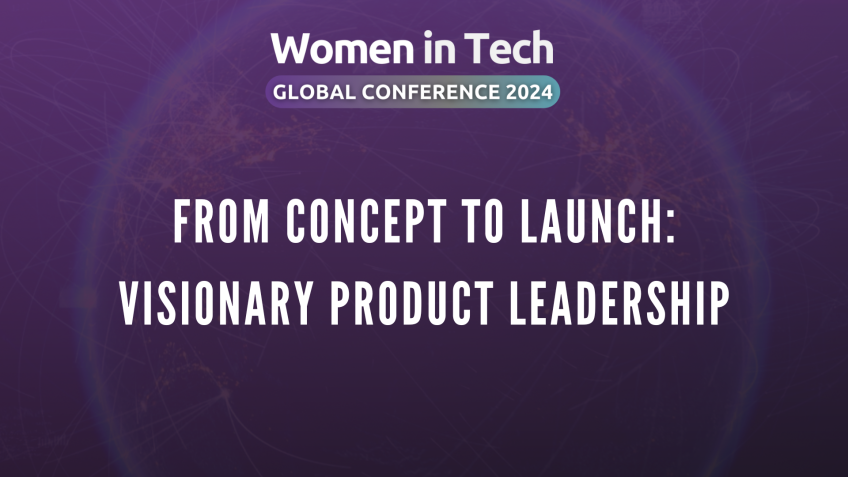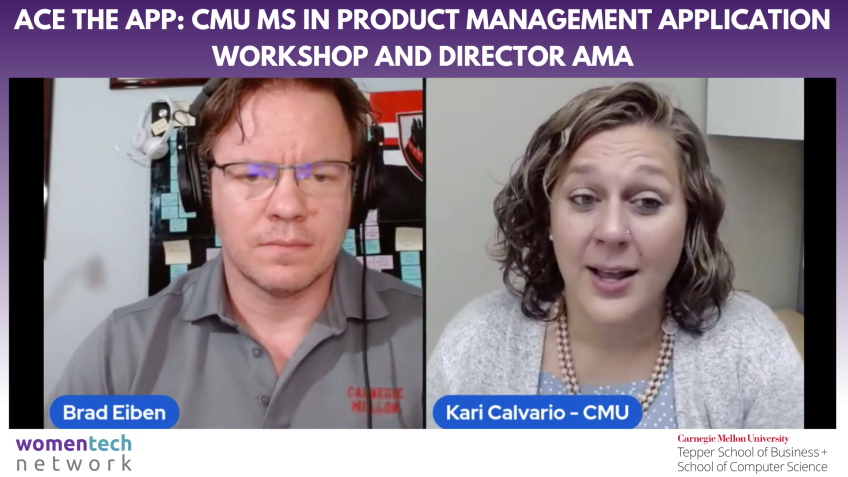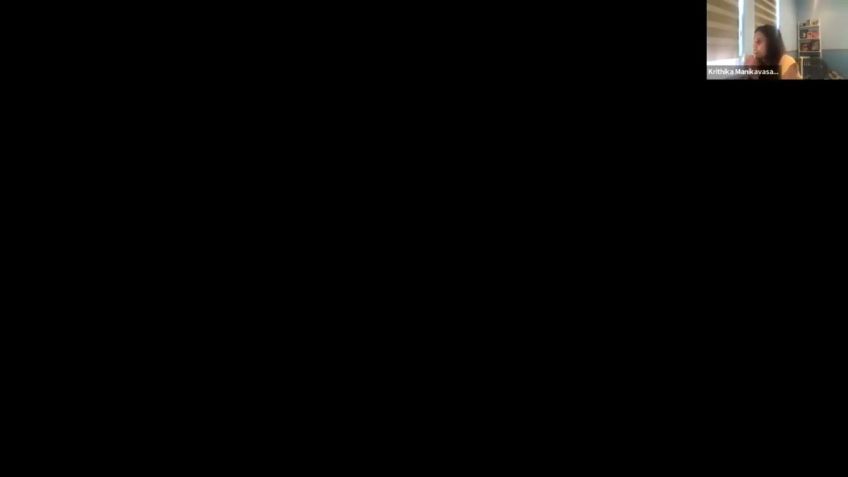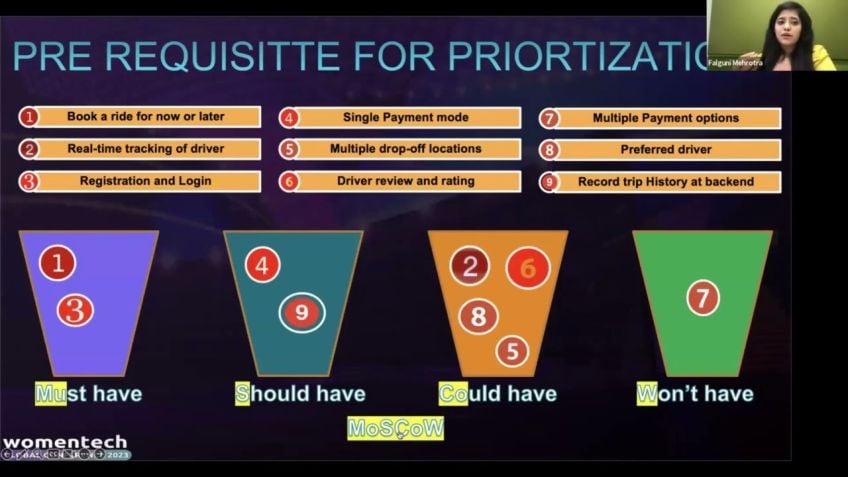Corina Dumanovschi Product Sailor Caught in a Storm
Transforming the Tech Landscape: An Insider's Perspective
Embarking on a journey to build a new product from scratch is an invigorating, but daunting experience. Couple these feelings with a sudden organizational change and unfamiliar domain, and one ends up with a compelling narrative filled with twists, turns, and valuable takeaways.
The Starting Point: A Sea of Uncertainty
Every story, including mine, begins at an unexpected juncture. In my case, it was an organizational shake-up that led me into an unexplored domain just a week into a new job. My new manager, however, was trusting and optimistic, offering me an opportunity rather than a challenge.
Though a cocktail of curiosity, fear of failure, and imposter syndrome pervaded my initial days, I knew it was a vital process of self-discovery and growth towards creating value for our users.
Product Discovery: The Validation of Hypotheses
As any product manager would testify, the tools and processes we use are crucial. They help in validating hypotheses, understanding the market, users, costs, and risks. In the beginning, it's all about absorbing information, from domain knowledge to user research. However, it's important to keep a cautious approach and question everything.
Overcoming Bias: The Next Step
- Users often dislike reading information on a screen and fail to pay attention to important details. These must be conveyed in ways that are intuitive and engaging.
- When exploring new product perspectives, one must be careful not to fall into the trap of loving an idea too much. Every hypothesis must be tested, re-tested, and even discarded if it doesn't work.
Internal Storm and Navigating Change
As we made strides in product development, we encountered significant resistance within the organization family. The lure of comfort and formed habits often overshadows the need for change.
In times of change, emotions run high and habits die hard – it's a tough reality both in terms of the users and internal stakeholders. Thus, empathetic understanding of the situation and effective communication are crucial during this stage.
Staying the Course
Even with the right navigation and empathy, there are bound to be obstacles. The journey towards product creation is not linear. With multiple routes to reach a single destination, flexibility is key. It’s a continuous cycle of learning, iterating, and repeating.
Key Takeaways
- Don't be too attached to your ideas. They will evolve as your experience and learning grows.
- Be empathetic and understanding. Care deeply about how your work impacts your users. This is not a soft skill, but a core one.
- Always be prepared. Have executive summaries, presentations, demos, or user manuals ready for different scenarios.
- Remember, a stormy sea equips you with more skill than a calm one would. So embrace challenges and obstacles as learning opportunities and keep your curiosity intact.
Thank you for your attendance and your interest in my talk. If you have any follow-up questions, feel free to reach out to me on Twitter or LinkedIn.
Video Transcription
Let's get um let's get started. So we only have 20 minutes today. Um And while I want to talk about my journey, uh building a new product from scratch, I will be focusing on some of the struggles since I feel that we rarely call them out publicly.And they do make us stronger product people and enhance the culture of our companies, not to mention the customer Centricity. So let's begin our story. Uh once upon a time, right? That's how all stories begin. I had just joined the company and following an organizational change, I landed in an area where I did not have any domain expertise. Um A week in, I met my new manager and I was very upfront about where I was coming from. She was however trusting and optimistic and she decided to empower me to embark on a learning journey uh to look for a fresh perspective and come up with how I can bring value to our users in the company. Figure out something new, take the green field approach and think outside the existing status quo. This was super exciting. So obviously, curiosity invaded the realm. Um The beginning was particularly intense, there was so much information to absorb and so many sources and avenues to get it from.
When I say information, I mean domain knowledge, in my case, it was very specific around the payment area. Um But I also mean user research that was already available out there, qualitative quantitative data, people, some of the user experience um history in the company. Um I used a lot of whys why anything everything. Yes, no. Uh what was happening and imposter syndrome kicked in. I think this is, this tends to be a problem particularly as a woman in tech. Uh I made myself look as if uh I was uncertain or I was not confident enough. Um Maybe not strong enough due to the cautious approach that this imposter syndrome triggered for us for me. Um Of course, I was excited but I also felt um a fear of failure and it took me a while until I realized that that was OK. Um What I had to do was stay back and do some internal reflection, get my to know myself better and define my compass. Um Another word of warning here, if you don't sound confident, uh people will doubt your skills. That's a sad reality. OK. So let's do this right? Product discovery time. Um If you've been working as A PM for a while, uh you're probably going to say yes, yes. We know all about the tools and processes. Uh and all of that. Um But do let me summarize some of them briefly.
Um You gather the cross functional um group of people, you look at an opportunity tree. Uh If you don't follow Teresa Torres, I highly recommend you do uh you do a design spread qualitative quantitative research which includes testing user testing surveys. Um A B tests. Uh How might we answering all of these questions? So in a nutshell, validate those hypothesis um to make sure that uh we understand the market, the users, the cost, the risks. Me and the team because as I mentioned, this takes a lot of effort and a lot of people have to be part of it, make sure we cover our bases and it turns out um that something new was um taking shape and it was transforming our in-person uh meet up uh core business and expanding it to a bigger footprint.
One where we have facilitated transactions, remote ones, mind our biases. This is a super important one. So we are putting some serious cognitive load on some of our users and we were convinced it was super intuitive, but remember that this was new to them. Um And our users do not like to read information on a screen or a page nor were they paying attention um to our various attempts to tell them about next steps. This was something that we had to change and try different approaches to so many times. Um On the product side, you may love the idea uh because you're excited and you're invested and you're thinking, oh my God, this can, this has such an amazing potential. Um But be careful about, be careful about it. Uh Be careful about the hypothesis that you test. This might not be the last one that you do have to test and it might, it may be that you build on um on certain ideas and hypothesis or it may be that you have to discard them and really move on. Um An example that I like to uh to bring to emphasize this. Um some users in uh user testing were going through the the flow without understanding it. So they had their eyes on the prize, the build, the build this castle, get it done super fast. Um And there we go, success, right? That doesn't mean that they would have used it in real life. Um They were after all in a user testing session. So they might even uh think about not hurting our feelings and so on.
So do make sure to unpack the different steps that's super important and never ever blame it on the users or take the easy way of saying, oh, it's just one or two people, you really have to pay attention and uh work through these things. OK. So this is the part that you might have encountered more frequently. Um I want to talk about the moment when the first internal storm hit um In my, in my team's happy product discovery bubble. Um I thought that by doing things the right way, stakeholders and colleagues will buy into the vision and what we're trying to solve and achieve. Um turns out that we were, as I mentioned, previously staring at something that was perceived as a huge change. Uh We knew it was change, but this was apparently a huge one. It was a change in direction, something different than what had made the company successful up to the present day. And uh a good amount of people took panic and fear as their first reaction. Um It was it was becoming real. It was no longer a mood shot, it went to roof shot, it went to palpable reality. So of course, uh everybody's fears and insecurities and worries about how this might affect them kicked in um the aha moment here is that change, we expect it to be hard, but we do not have a sense.
How about how hard it will actually be um value for the user backed by data and rigorous research is not enough, a strong sense and empathy of empathy and understanding um both the users, but also where the internal stakeholders um and collaborators in your company are coming from is super important.
Don't assume us and analyze. And so uh a another anecdote that I want that I wanna share here um without a sense of real urgency, people will choose comfort and formed habits over taking a risk towards the future. And when I mean people, I mean your users, but I also mean um your culture operators team internal stakeholders in our, in our, in our case right now, we are living through a pandemic, right? So of course, with social distancing measures in place, we cannot think of uh doing any sort of in person trade, we we cannot meet strangers, we can barely meet our families and friends. Um And this kind of approach of offering uh an alternative to the in-person meet up makes perfect sense and it's super important. But if you go back a couple of years, um this was not the case then. So there was no real sense of urgency um that this might be necessary. We had to work quite a bit um to get this off the ground and also to move past the first storm. Good news is that we reached a place where we're in this ship together. Um It takes time and we kept updating our approach uh and framing the argument in multiple different ways. Um to get people on board. We made sure to position the product as an extension and not as a replacement or a threat to the current experience.
Um This builds a lot of resilience and in the end, we're all humans. So it's important that we are mindful of this. And if you ever are put in ac in this kind of situation to make sure that um you are careful about and the we of um, egos maybe agendas, particularly loud voices and how to navigate around them. They don't come from a place of bad intentions. Um, but they can have serious consequences if you l if you leave them unchecked and unknown. Um, in my case, it was exactly like that. I had to dig a lot deeper to understand why certain fears and concerns inside the organization because we're no longer a start up. Right? Uh, we, we were coming and what exactly was the biggest barrier for people to get on board. And in the end it happened, we got in that ship together and things started picking up again. Um, they did get better after the first few storms and failures. This doesn't mean that we stop facing challenges. I want to be very clear about it. It means that we became a lot stronger at facing the challenges together. Um, it may also sound cliche but, uh, it's super important to have the different perspective and to have people, uh, sharing and voicing their concerns and also supporting your effort in the direction that you're going the end. No, definitely not.
It's, uh, when, when you think about stories and how we present them and how we think about the experience that we've been through. Uh, we, we might, uh say, ok, and at some point, uh everything ends. Well, no in product, things do not end. Um, you learn iterate and repeat. That's the reality. I think when we embark on a mission and we have this awesome opportunity to build a new product or even a new feature or, uh, build something and make a change for the better in the world. We think that we're gonna go down the road and we're gonna have some highs, uh, some ups and downs. Um, as you can see in the picture on the left side, like there's a road with ups and downs, but like the road keeps going. When in reality, it's a junction, you have multiple roads. Uh they go up down left, right, you can uh take 35 routes to reach the same destination. Um So it's super important to be mindful of that and always have the comparison in your mind. It's the same thing when you learn iterate and repeat with your, for your users. But then also for um your stakeholders, your collaborators, your team um always keep improving. That's something that um you learn the hard way sometimes and never think that OK, there's just a an end unless of course, there are, there are certain moments in a product life cycle where uh it reaches its end. It, that's it. OK?
Um I want to summarize a few points for you to remember uh from this talk. Uh the takeaway don't, which is, don't fall in love with your ideas. Um don't underestimate emotions and habits of your users and stakeholders when making big changes. Uh be I I say on the b side, be exceptionally mindful of this. Don't ever let entitlement or blame creep up. Um What I mean by this is sometimes in organizations you can see silos popping up. Uh This is not my problem or it's this other departments. Um No, it's not. If what you're building and what you're solving for, for the users such as different um area, different teams and different departments and it's part of your mission and it's part of your responsibility uh to take that in and to address it. You, you cannot just say, hey, I don't care if this adds so much operational complexity. I'm releasing my MD P which is a very good example, a minimum, viable product. Um And well, it will be a lot of manual work but it will be for somebody else. No, no, please don't do that. That's um that's definitely not gonna set you up for success and you're not gonna get that buying and alignment and that motivation and purpose in your uh in your team and your organization to um continue and be truly customer centric. OK? And the positive side of things, uh the takeaway Jews have strong opinions held loosely, make sure that you allow yourself to change your mind. Um As much as you like a certain idea or you're very confident about it. Um It can change and it will change.
It will evolve as your experience and your learnings um evolve, care deeply about how your work impacts your users and everyone around you. Uh This is not a soft skill, this is a core skill, caring deeply about what you do is a core skill and it's something that you cannot uh build, you cannot do without, you cannot have that curiosity and empathy to do product and build things first and solve problems for other people.
If you don't care about them, um be comfortable with getting uncomfortable. The reality is that you don't have that beautiful road with ups and downs. Um Sometimes you have multiple uh uh roadblocks along the way and the path goes, it takes you in unexpected places. So recognize as early as you can that you will feel uncomfortable, you might have imposter syndrome, kicking, kicking in, you will not be convinced uh about things or something will make you feel queasy. Um This will happen. So just expect it, I think you can more easily navigate it when you expect it. Stand your ground, motivation and purpose translate into resilience. Um sometimes in certain uh domain areas and then depending on the company things take time and for you to go through the through the things, take time, you have to be resilient and you have to keep questioning why with empathy and respect um on the more practical, even more practical side of things be prepared, always have material ready for various audiences.
Have an executive summary on hand or multiple executive summaries on hand if you can, those will help you. Um and also presentations or demos or um sometimes user manuals have all of this ready. I don't know about you, but to me, it happens so frequently that somebody that I never spoke with uh just sends me a message on Slack and asks me about that. And uh it's so easy when I have something on hand to share with them or when a super urgent meeting with uh your management team pops up and you have to be present and you have to be able to show the data, show an executive summary and um talking, talking about everything related to your product.
So all different types of communication options, alternatives, risks, when they say, OK, maybe they tell you that you need to stop what you're doing and do something else. Make sure you have some sort of um alternatives prepared and already worked out in your mind. And remember that a smooth sea never made a skillful sailor sailor. I think we learn so much by going through uh uncomfortable and tough situations, by having to deal with uh uh difficult uh uh situations, people by having to try 10 times before finding AAA certain experience that works. So um yeah, you're not gonna jump on the ship and go from point A to point B and cross the, cross the ocean, uh, while you're crossing the ocean, you're gonna have a storm, a tornado of vortex. Uh Maybe you see an iceberg along the way. So, yeah, embrace these things as learning opportunities. Um, and keep your curiosity and weeds about you. Ok. Um That is all from my side. Um, I would talk about this for so much longer, but we do not have the time. Um, do reach out to me. I'm gonna try and have a look at the questions here. Um I'm on Twitter. Uh If you have follow up questions for this, you can also find me on linkedin, but I am I am the person that will reply to you faster on Twitter.
Thank you for coming to my talk today and let's see. Um If we can, if you have some questions. OK, I'm scrolling. Um What are your thoughts on the pandemic affecting the tech industry? I think it will lead to a new normal um in the, in the tech industry also for us. Uh It will create that sense of urgency depending on the domain you're working in. Um Exactly how well the first example is that we're going digital with everything even um even for government services up until now, you had to uh for example, in Berlin, where I live, you had to go and pick up a certain uh parking permit in person and fill in a form. Well, that's no longer happening thanks to the pandemic, the digitalization is accelerated. So you do everything all of that online. I think we're also gonna become a lot more um data privacy and security concern. Or at least I'm hoping we will because this is another super important topic seeing how uh we are reacting to the pandemic and how we're looking at different apps to help support us um live with it. Hopefully that answers. Um ok, I don't think we have additional uh question how to prove your value as a product manager in a selective process for a new job. Have examples on hand all the time, um be prepared to back up everything that you're saying.
So no, don't only say product discovery but say did this exact with this exact example from your past experience and this is how it panned out and worked, prepare structure um to make sure that you your points come across and yeah, those would be my initial uh initial points.





